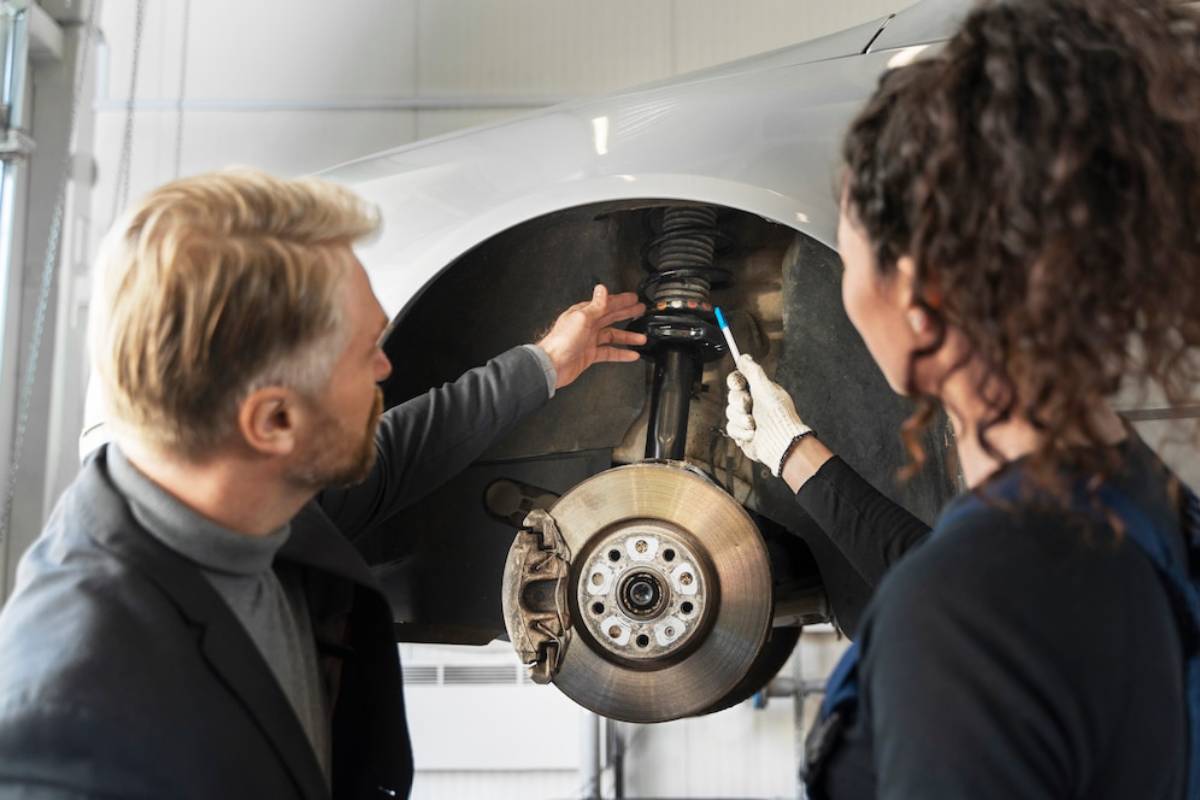
Regenerative Braking: How It Works and Why It’s Important
Electric vehicles (EVs) are flipping the script on how we drive. Among their groundbreaking features is EV regenerative braking—a true game changer for the roads. This clever technology boosts efficiency and captures energy like a sponge. The result? A longer driving range and reduced wear on those brake pads.
In this guide, we’ll dive into the magic of regenerative brakes, explore their perks, and contrast them with traditional braking systems. Plus, we’ll uncover top tips to boost their performance. Prepare to hit the road with renewed understanding and energy savings!
What Is Regenerative Braking?

Regenerative braking: the eco-friendly wizardry of electric and hybrid vehicles. It captures energy that would otherwise melt away as heat during a stop. Rather than relying solely on traditional friction brakes, this innovative system transforms kinetic energy into electrical power, storing it in the vehicle’s battery for later adventures. This clever conversion boosts energy efficiency and extends the driving range of electric vehicles.
Though the magic of regenerative braking isn’t new, dating back to electric trains and industrial machines, today’s EV technology has breathed fresh life into this concept. Now, it’s a vital ingredient in the recipe for sustainability and efficiency on our roads.
How Regenerative Brakes Work

In a conventional ICE vehicle, braking leans on the friction dance between brake pads and rotors, working tirelessly to bring the car to a halt. This friction generates heat, releasing valuable energy into the atmosphere like steam escaping a boiling pot. Step into EV regenerative braking. Here, the electric motor changes the game. It slows the vehicle and turns kinetic energy into usable electricity.
Let’s dive into the nuts and bolts of how regenerative brakes operate:
- Deceleration Commences – As the driver eases off the accelerator or taps the brake, the electric motor switches gears.
- Energy Transformation – Instead of siphoning energy from the battery, the motor becomes a generator, converting kinetic energy into electricity.
- Battery Boost – This newly generated electricity flows back to the battery, recharging it and stretching the driving range.
- Friction Brakes as Support – Should extra braking power be required or if the battery reaches capacity, the traditional friction brakes stand ready to lend a helping hand, ensuring a smooth stop.
Benefits of Regenerative Braking

1. Improved Energy Efficiency
By converting motion into electricity, energy recovery in electric cars helps improve overall efficiency. Instead of wasting energy through heat dissipation, regenerative braking recaptures and repurposes it, allowing EVs to travel farther on a single charge.
2. Extended Driving Range
One of the biggest advantages of EV regenerative braking is its ability to extend range. The more energy recovered, the less frequently an EV needs to be recharged, making it an essential feature for optimising battery performance.
3. Reduced Wear on Braking Components
It significantly reduces brake wear and tear because regenerative braking slows the car without relying entirely on traditional brake pads and rotors. This results in lower maintenance costs and longer-lasting braking components.
4. Enhanced Driving Experience
Many EVs offer adjustable regenerative braking settings, allowing drivers to customise the level of braking force. Some vehicles have one-pedal driving. Lifting off the accelerator slows the car. Because of this, traditional brakes are rarely needed.
5. Lower Environmental Impact
Since regenerative braking reduces the need for frequent charging and extends battery efficiency, it also lowers the overall energy consumption of the vehicle. This helps reduce the carbon footprint. Energy recovery in electric cars is key for sustainability.
How to Maximize Regenerative Braking Efficiency
1. Use One-Pedal Driving
Many EVs let drivers use one-pedal driving. When you lift off the accelerator, regenerative braking kicks in automatically. This feature enhances efficiency and reduces reliance on the brake pedal.
2. Anticipate Stops and Coast When Possible
Smooth driving habits, like anticipating stops and coasting instead of braking hard, boost energy recovery in electric cars. The longer the regenerative braking process, the more energy is recaptured.
3. Adjust Regenerative Braking Levels
Most EVs allow drivers to set different levels of regenerative braking. Try adjusting these settings to find the best mix of efficiency and comfort while driving.
4. Drive in Urban Areas
Regenerative braking works best in stop-and-go traffic. Here, you brake often, which helps recover more energy. City driving tends to benefit more from regenerative braking than highway driving.
5. Keep Your Battery at an Optimal Charge
If your EV battery is fully charged, regenerative braking won’t work as efficiently because there’s nowhere for the extra energy to go. Keeping your battery level between 20-80% ensures that regenerative braking remains effective.
Does Regenerative Braking Work in All Conditions?
Though EV regenerative braking shines in efficiency, its performance can waver with the elements:
- Cold Weather—Batteries can have trouble holding energy in cold conditions, reducing their ability to regenerate power.
- Fully Charged Battery – A full battery has no space for renewal. This makes regenerative braking less effective.
- Highway Driving – On the open road, speed is high, so chances for energy recovery drop. Stop-and-go traffic is the true friend here.
- Slippery Roads – To avoid a slippery slope, some EVs dial back regenerative braking when roads are icy or wet.
The Future of Regenerative Braking
EV technology is evolving. Regenerative braking systems are getting more advanced. Future developments may include:
- Smarter AI-controlled braking systems that optimise energy recovery in real time.
- Integration with self-driving technology to improve braking efficiency in autonomous vehicles.
- Improved battery technology to store even more regenerated energy.
- Advanced thermal management systems to make regenerative braking more effective in extreme temperatures.
Conclusion: A Key Feature for EV Efficiency
Grasping the magic of regenerative brakes can supercharge energy recovery in electric cars. This tech win turns each stop into a gain. It boosts efficiency and extends your driving range. With regenerative braking, battery life gets a reliable ally, maintenance costs drop, and sustainability takes the front seat.
As electric vehicles gain traction, the evolution of regenerative braking technology accelerates. Soon, EVs will soar to new heights in efficiency and eco-friendliness.


